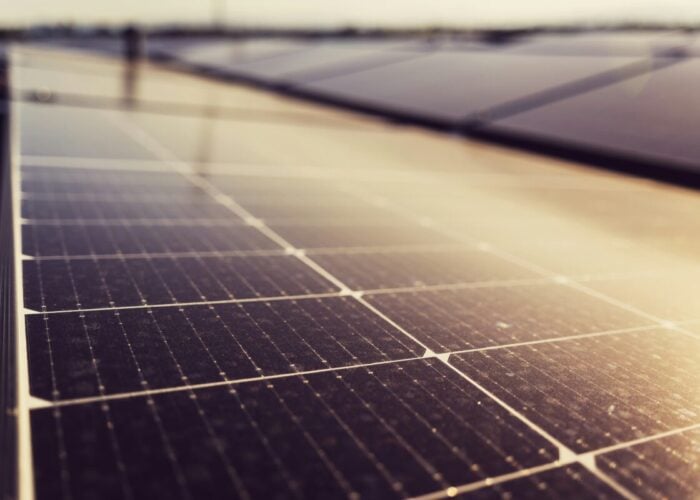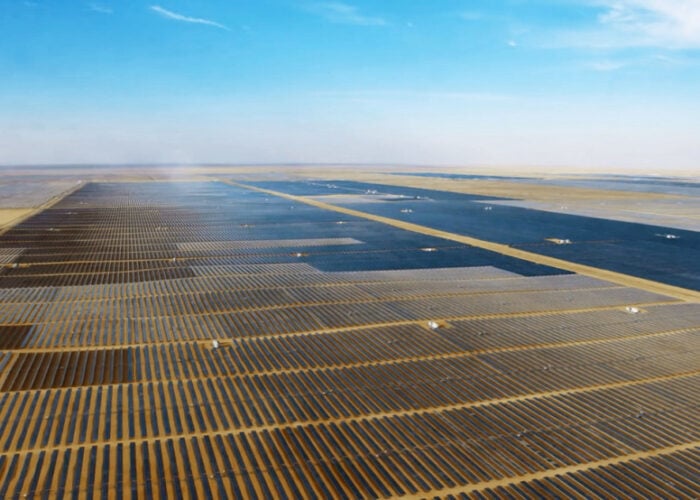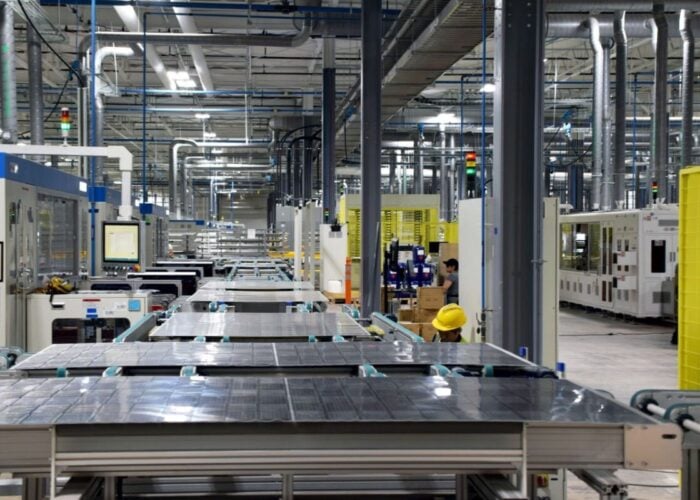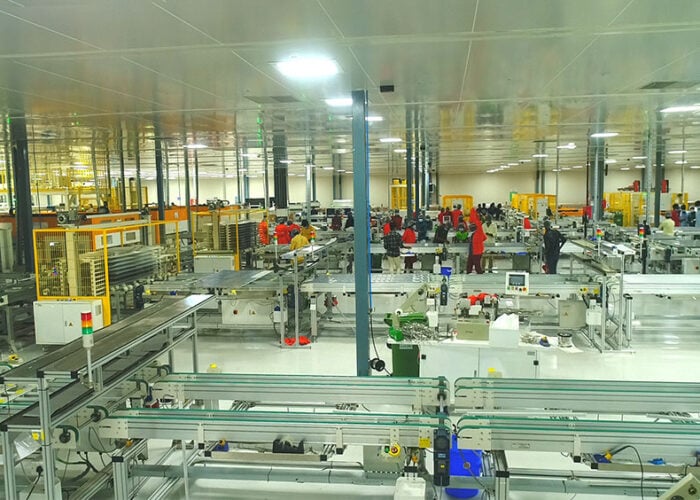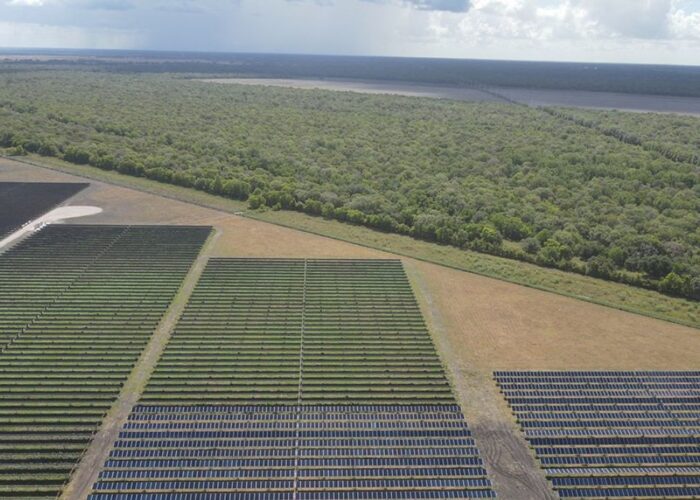
Industry experts gathered in San Francisco for the third edition of PV CellTech USA earlier this month to discuss US solar manufacturing landscape and cell technology plans. Here are some of the key takeaways of the event, which was heavily dominated by perovskite discussions throughout the two days of the conference.
Other key topics are the new tariff world that the US industry lives in and how foreign entity of concern (FEOC) and Section 232 legislation impact both the upstream and downstream industry.
Try Premium for just $1
- Full premium access for the first month at only $1
- Converts to an annual rate after 30 days unless cancelled
- Cancel anytime during the trial period
Premium Benefits
- Expert industry analysis and interviews
- Digital access to PV Tech Power journal
- Exclusive event discounts
Or get the full Premium subscription right away
Or continue reading this article for free
Perovskite, perovskite and more perovskite
Despite only one panel discussion revolving around perovskite and tandem perovskite, the technology was discussed throughout the conference by several panellists’ presentations and attendees’ questions.
The technology is still a few years away from being commercially available at a gigawatt-scale, with different timeframes—even for pilot lines of up to 100MW—shared by the companies working on the technology. According to Qcells’ chief technology officer, Danielle Merfeld, in a conversation with PV Tech ahead of the event, perovskite-based technology could dominate the industry within a decade.
Most of the panellists seemed more set on using a 2-terminal solution, even though 3-T and 4-T shouldn’t be discarded yet, as there is still more research to be done on the other solutions.
Moreover, Sebastian Gatz, VP of renewable energies and strategic partnerships at equipment manufacturer von Ardenne, highlighted to PV Tech the importance for equipment manufacturers in proposing products that are compatible with the current n-type technologies but that could, in a few years’ time, be updated to then produce perovskite cells without the need to replace the entire manufacturing line.
Gatz suggested that while updating manufacturing lines would be feasible with the physical vapour deposition (PVD) process, improving the current lines so they can quickly switch from assembling tunnel oxide passivated contact (TOPCon) modules to perovskite ones would be the optimal solution.
“If you’re moving from TOPCon to perovskite tandem [using TOPCon as the base solar cell], you no longer need the silicon nitride coating on the cell’s front side,” Gatz told PV Tech Premium. “Instead, what you primarily need are a TCO coating and an electron transport layer (ETL) layer coating. The advantage is that you can already use your existing GIGANOVA PVD equipment to deposit these two layers via magnetron sputtering in these first two layers in your tandem approach, so there is no need to retire that equipment.
“Both the recombination and the ETL are very well suited for sputtering. After that, it’s mainly about completing the remaining layer stack—the perovskite absorber, the hole transport layer (HTL), the top TCO layer and the metalisation,” added Gatz.

He explained that this is the case for the company’s GIGANOVA equipment for the TOPCon PVD route, where the silicon nitride is deposited on both the front and the rear sides of TOPCon solar cells by means of magnetron sputtering.
“There are strong indications that both magnetron sputtering and linear thermal evaporation are highly promising, scalable technologies for depositing several of these layers—paving the way for perovskite/tandem solar cells to reach mass production; von Ardenne customers are currently evaluating both methods in pilot production settings.”
Gatz added that this approach could significantly lower the capital expenditure (capex) when transitioning from today’s TOPCon technology to tandem perovskite.
“You just have to add additional equipment for the remaining layers. This is far less equipment as you would do it today with a chemical vapour deposition (CVD) route, where you would have to scrap all the existing SiN front side coating equipment and purchase an entirely new equipment set for the full process sequence” explains Gatz.
“A very similar logic applies to HJT (heterojunction)-based tandem solar cells, where magnetron sputtering is already used for TCO coatings on both the front and rear sides,” added Gatz. “In a tandem configuration, the front side TCO can be replaced by the recombination and ETL stack – again using the same GIGANOVA equipment.”
Obviously, before completing that transition from n-type technology to perovskite or tandem, the industry will need to solve some of its main challenges, amongst which are its durability and reliability.
However, the reliability issues are not unique to perovskite or new technologies, as this is something that is also seen when there are bill of material changes in modules that could have adverse risks, as explained to PV Tech by Tristian Eroin-Lorco, VP of sales and marketing at Kiwa PVEL, who spoke on this topic in 2022 and earlier this year, when when talking about the latest trends from this year’s Kiwa PVEL Module Reliability Scorecard.
TOPCon 2.0 closing the gap with back contact and HJT
Although not discussed as much as perovskite, a few panellists also highlighted the importance of TOPCon’s improvement that would put the technology at levels of efficiency close to back contact and HJT technology.
During his presentation, Ethan Ely, product manager at solar manufacturer Trinasolar US, showed how the conversion efficiency of TOPCon, TBC and HJT all stood within a percentage point of each other, and how the improvements made with TOPCon reduced the gap with the other.
Trinasolar’s own TOPCon technology—which it named TOPCon Ultra—reached cell efficiency of up to 26%, and is one industry example of these efficiency increases for the next generation of the technology. This would close the difference between the cell efficiency of TOPCons 2.0 cells and HJT and TBC cells to less than one percentage point.
“I think it goes to show that there are more improvements to be made on TOPCon that can continue to squeeze more power out of that so they continue to be competitive at a cost-competitive standpoint,” added Ely.
Ely went on to say that the gains made currently with TOPCon Ultra are additive gains that can be added in the future with tandem technology—even though not everything will be transferable to tandem products—given that there are two cells on top of one another.
“That’s why we want to invest in both, because number one, TOPCon is the technology of now, it’s this near-term value, and [we’ll] continue to invest in it, and the learnings we will have there will be applicable in the future when we move towards tandem technology.”
A new tariff world, plus the shadow of Section 232
The first part of day one of PV CellTech USA focused primarily on policy and tariffs that have impacted the industry the most this year. Section 232 and FEOC were, without a doubt, the two that were most on the minds of the speakers of the event, including those representing the downstream industry, while tariffs have entered a new environment with countries agreeing to tariff arrangements with the US, as seen with the European Union, the UK or Japan.
In addition, Trump’s administration could also explore revisiting the transshipment limits—the process that moves goods from one country to another before reaching its final destination—that could add a further 40% tariff on top of the ones set for each country, as was discussed last week.
Meanwhile, the implications of Section 232 on polysilicon imports are still unknown, and some speakers highlighted that this investigation was not necessarily a top priority for the administration compared to semiconductors.
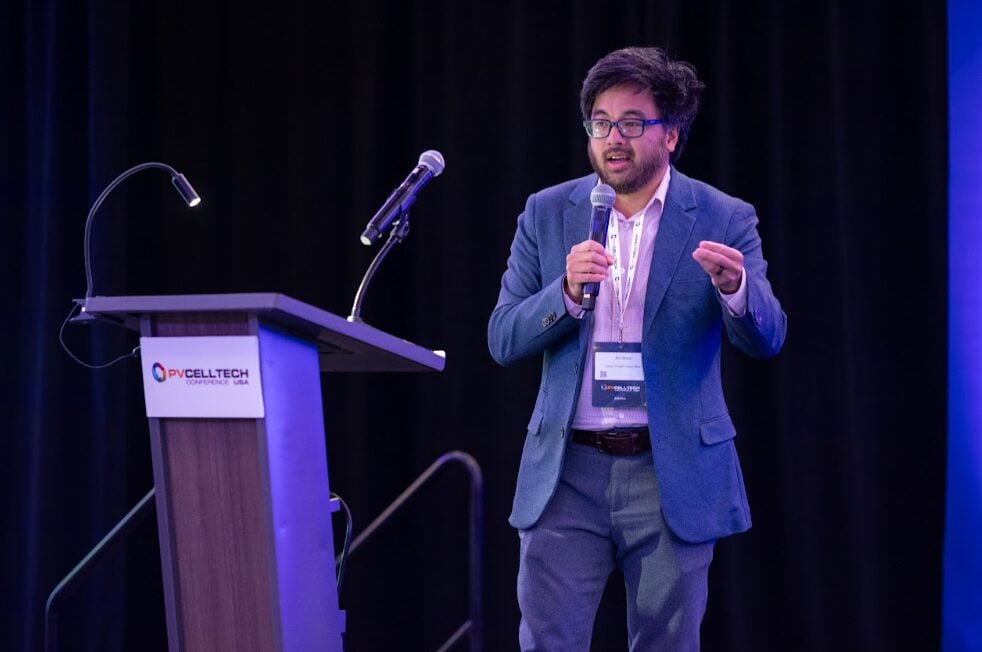
The US Department of Commerce has until March 2026 to come up with a decision on the role of polysilicon in national security interests. This decision could reshape the US solar industry and its supply chain, both for domestic manufacturers and developers or independent power producers (IPPs) that still rely on imported modules.
This is because one of the propositions explored—from the Coalition for a Prosperous America (CPA), a nonprofit organisation that focuses on US manufacturing policy—has called for a polysilicon tariff-rate quota that would affect the entire supply chain, and not only polysilicon.
CPA’s proposal was mentioned on several occasions during PVCellTech USA and seemed to be taken as the base case scenario for any possible decisions regarding Section 232 on polysilicon.
Meanwhile, the specific consequences of FEOC remain unclear, but for US manufacturers, there is an impetus to make sure they are compliant with the requirements that would make them FEOC compliant in order to secure the 45X manufacturing tax credits. Compliance would also be important for developers keen to secure investment tax credits, for instance.
Lack of US-made wafers, silver paste and glass
Finally, looking into the domestic manufacturing industry, some of the issues brought up during PV CellTech USA focused primarily on the upper parts of the supply chain, with a great lack of domestic manufacturing for wafers. Only a few companies aim to bring manufacturing capacity online soon, including Qcells with its own vertically-integrated plant in Georgia and Corning in Michigan.
This is an issue that was already highlighted at the end of 2023 by the Clean Energy Associates (CEA), now known as Intertek CEA, in a guest blog from Martin Meyers, principal consultant for market intelligence at Intertek CEA.
At the solar cell level, manufacturing capacity is slowly ramping up with more capacity to be operational in the coming months and years. A key challenge is that currently the US does not have a domestic supply of silver paste, and the price of the commodity has seen a near 70% increase in the past few months from US$28 per ounce at the beginning of the year to US$48 per ounce in October.
Adding to that problem is the limited supply of chemicals required for processing solar cells, and a lack of enough domestic solar glass, which was brought up by several speakers during the event, who called for companies to build a robust supply chain in the US for solar glass.
Overall, although manufacturers are competing against each other in the US for a share of the market, as was mentioned on the first day, they need each other to be successful for the benefit of the industry. A sense of camaraderie was present throughout both days of PV CellTech USA, with the industry looking in the same direction and aiming to consolidate a domestic solar manufacturing capacity that can keep growing in the coming years.
For more coverage of PV CellTech USA, you can read previous interviews and articles here (some require a Premium subscription).

